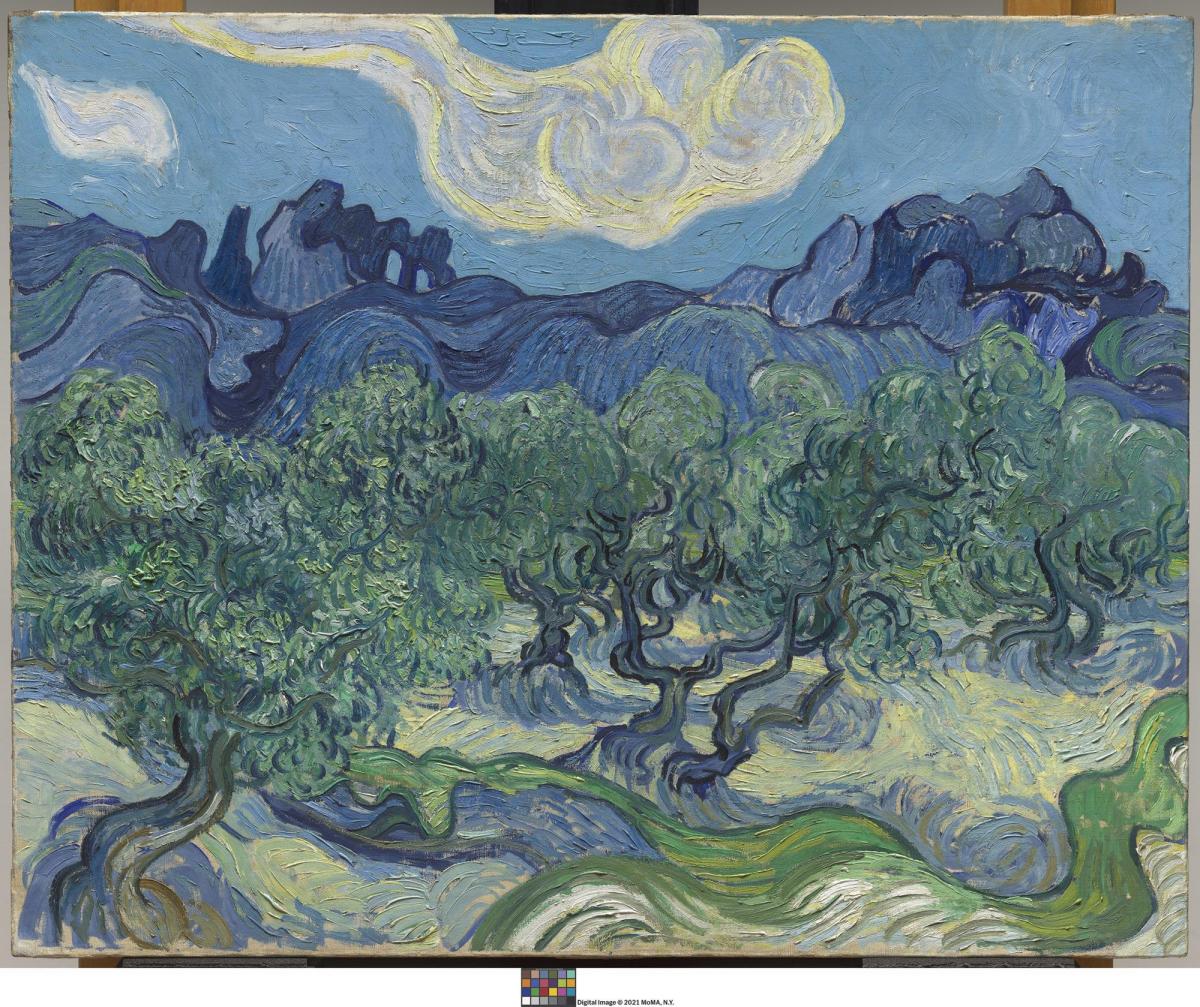It’s easy to think we know Vincent Van Gogh, the tragic artist who sliced off his left ear in despair and became at once a mythic and romantic figure. And, yes, all those iconic paintings everyone knows are here, including those timeless sunflowers, the haunting self-portrait and the “starry, starry night…“ painting that we can sing along to, thanks to Don McLean.
London’s National Gallery has curated a thoughtful and considered exhibition as part of its extensive bicentenary celebrations. This year also marks 100 years since the Gallery purchased two of the key works on display here: Van Gogh’s Chair and one of those vases of flowers. But it is two very singular works, The Lover and The Poet, which greet you as you enter, that highlight this exhibition is as much about the man as it is about the art.
The Lover is a portrait of Lieutenant Milliet, a soldier in the Zouaves who ‘has all the Arles women he wants’; The Poet shows a fellow painter, Eugène Boch, surrounded by a quintessentially Van Gogh night sky; between them hangs The Poet’s Garden, a view of the park outside Van Gogh’s home in Arles where young lovers would meet.
Each of these paintings holds clues to the artist’s inner life: he was amused by the Lieutenant, and just a little jealous of his success as a paramour; he envisaged Boch as the 13th century poet Dante; and he imagined poets, writers and artists of the past gathering together in the little park. Throughout his life, Van Gogh was a sad and lonely figure, sustained by his brother Theo and relying on a few friends, including Milliet and Boch.
These works were painted in 1888, the year he moved to Arles, and act as an introduction to the man and the exhibition. Indeed, all the works in the exhibition date from 1888-89, the last two years of his life. From here, the works offer meaningful insights into his interior and exterior worlds.

Room two, “The Garden: Poetic Interpretations”, includes wonderful studies of parks and gardens, of people and plants. Works 18 to 20 show Van Gogh working in a different style; 20 Weeping Tree is quite remarkable.
Room three invites us to step inside “The Yellow House”, Van Gogh’s home on the Place Lamartine in Arles that was both his studio and his refuge. Here is the famous Van Gogh’s Chair, a pseudo self-portrait with just a pipe and some tobacco as indexical of the man, alongside the magical and infinitely moving Starry Night over the Rhône. There is also a more traditional self-portrait painted in the asylum immediately after his breakdown. Here he reaffirms his identity as an artist and as a man on a quest to know himself.
Room four is titled “Montmajour: A Series” and features the countryside around the ruins of the 12th century Montmajour Abbey. These are not representational landscapes but imagined places, inspired by the land and created in the mind. They also show yet another style, with Van Gogh using pen and ink, chalk and pencil, and relying less on those lush, thick oil paints we always associate with his work.
And so to Room five, simply titled “Decoration” and showcasing his wonderful touch with colour and light. Work 35 The Stevedores is set against a delicate sunset, while Portrait of a Peasant is an absolute study in the use of unexpected hues to create a startling effect in the skin tones and the turquoise strands in the beard.

And, yes, here are the two Sunflowers hung either side of La Berceuse (The Lullaby) as the artist had originally intended. A simple sketch of the hanging, sent from the artist to his brother, is included in the exhibition guide. Segueing to Room six “Variations on a Theme”, we see stylised works repeating many familiar motifs and again working with different colours, mediums and textures. The various representations of olive trees make a wonderful study – compare and contrast these works to see them via the mind and eye of the artist.
The walls of each room are painted in quintessential Van Gogh colours, evocative of the south of France, not so much as it was, but as the artist saw it. These are gentle and soothing tones of blue and green and Sardinian yellow that allow the works to speak for themselves. Importantly, the works are allowed to breathe on the wall, uncluttered by descriptive passages – the curators have thoughtfully contained those to the excellent exhibition guide – letting each piece speak for itself.
Read: So you want my arts job: Photography Curator
Van Gogh: Poets and Lovers really is remarkable exhibition and genuinely offers art lovers a once-in-a-lifetime opportunity to see these works together. As well as the National Gallery’s own holdings, these works have been loaned from galleries and collectors the world over, from New York to the Netherlands, and Mexico to Tokyo. It truly is both magical and memorable!
Van Gogh: Poets and Lovers will be exhibited at The National Gallery, Trafalgar Square until 19 January 2025.
Tickets from £24.




